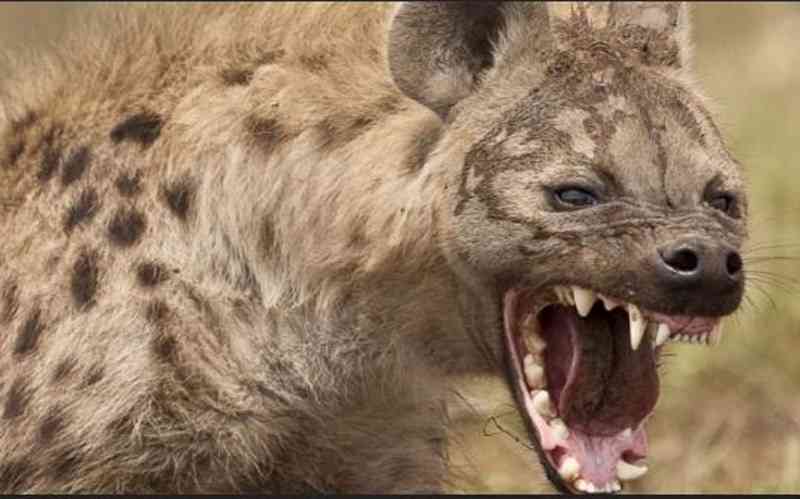
CHIREDZI South Ward 10 councillor Leonard Makondo says hyenas are rampaging the district, killing livestock in the process.
Chiredzi, a district in Masvingo Province, is home to Zimbabwe’s second largest national park the Gonarezhou National Park (GNP). The park is managed by Gonarezhou Conservation Trust (GCT), a partnership between Zimbabwe Parks and Wildlife Management Authority and the Frankfurt Zoological Society, a German conservation organisation.
Over the past few months, villages have witnessed an increase in the number of attacks by predatory wildlife that have forced GCT to engage with communities to offer them mitigatory solutions to the loss of animals.
Chiredzi South, Ward 10, is one such place that has become a hotspot for predatory wildlife attacks given its proximity to the park. According to Makondo, Ward 10 covers 110 villages which has 11 610 households.
“My ward is mainly affected by hyenas, jackals, leopards and even lions sometimes. But the most challenging predator is the hyena which is attacking almost every month. We have losses of livestock. It could be cattle or goats, if they are left outside the pens, they are being attacked,” Makondo told Newsday Farming in an interview during a recent tour of affected villages in and around the park.
“An average of about 10 to 15 cattle a month are killed by hyenas. By lions it’s an average of one per three months and then the goats by jackals is an average of five per month. That is the challenge being posed by these wildlife animals. These other wildlife animals just pass through, but they don’t vandalise.”
He said an average-sized cow costs US$400 — US$450 per beast, while a goat is sold for between US$20 and US$30.
“The main income generating project in my ward is livestock which is cattle and small stock like goats, sheep and pigs at the same time which also survive by small grains,” Makondo said.
- Villagers fight climate change through smart agric
- Minister dragged to court over chieftainship
- Another teenager dies giving birth at shrine
- Health talk: GZU School of Medicine boon for Masvingo
Keep Reading
Among some of the communal farmers who have borne the brunt of the wild attacks are married couple Valenta and Steven Chauke.
Residing in Mafunjwa village, Ward 15, the Chaukes have been surviving on livestock farming, but had to focus on crops as they were losing three to four goats on average to hyenas monthly.
Being into goat rearing, the couple buys a kid for between US$20 and US$25, grows it, and resells it for between US$30 and US$35.
Their homestead is very close to Mwenezi River from which their livestock drink, but often fall prey to hyenas and even baboons.
“The baboons eat the goats... hyenas also eat the goats, especially when they go to the river to drink water,” Valenta said.
“If our goats just go to the river to drink water, they never come back in the same number when they left.”
She said the baboons often throw fruit on the ground to lure the goats while hiding in the trees. Once the goat comes to eat, the baboons pounce on the goats.
For hyenas, they lie in wait for the livestock before pouncing.
Valenta said they have stopped investing in goats and now survive on selling vegetables, beans or maize depending on the season and grow chilies to chase away any elephants that may stray into their garden. The chilli is used to make “chilli cakes” that are then burned because their smell keeps the elephants away.
“My property is about 0,1 hectares, so when the elephants come in, they would trample my crops or eat them. But, with this chilli, it helps keep them at bay,” she said.
l Read full article on www.newsday.co.zw
According to GCT, 41% of the livestock attacks in and around the park were from hyenas last year with over 200 cases recorded last year. Goats remained the predominant livestock attacked. However, the livestock attacks from hyenas were down from 50% in 2020 with a total of about 200 cases recorded.
The economic value of these hyena attacks cost over US$70 000 last year, higher than the nearly US$65 000 level recorded in 2020.
“The incidents we are getting are not accurate in representing the number of incidents in and around the park,” GCT community liaison officer Hebert Phikela told reporters at the end of the tour of GNP.
“We can only record what has been reported. There are a certain percentage of unreported incidents, so this only works to give us an idea of what is happening outside the park as far as human/wildlife incidents are concerned. It only helps us to map the hotspots.”
GCT has been holding several technical training workshops to help villagers better protect their animals which also includes securing the animals in the evenings in robust kraals and pens early and releasing them later in the day.
- Follow us on Twitter@NewsDayZimbabwe






